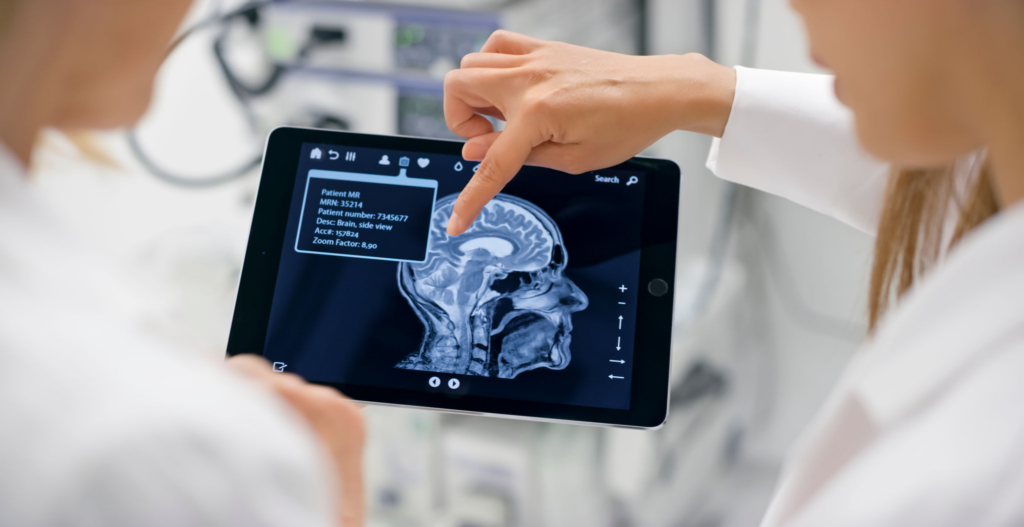
Traumatic brain injuries (TBI) are a serious medical issue with a poor prognosis when the injury is severe. This injury is the number one cause of comas and the leading cause of disabilities in children and young adults. Research estimates that complete recovery for severe traumatic brain injuries is only around 25%.
Traditional treatments are not effective in helping patients restore damaged brain tissue and neurons where the injury occurred. Typically, most patients see little improvement six months after they sustain their injury. If there is no progress in the first six months, then patients and families are given almost no hope for a full recovery.
Stem cell therapy could be a potential treatment method for patients who are suffering from traumatic brain injuries. There are a few hurdles that need to be overcome before stem cell therapy becomes a mainstream treatment.
There are multiple sources of stem cells that can be used in treatment. Bone marrow stem cells are one of the most commonly used stem cells due to their relative ease of access and therapeutic potential. The medical community needs to determine which type of stem cells are most effective for TBI patients.
Getting stem cells to the damaged area of the brain has been a large hurdle for the medical community. If stem cells can make it to the damaged tissue and neurons, then they can release regenerative factors, reduce inflammation, and potentially differentiate into neurons and brain tissue.
A study, Autologous bone marrow mesenchymal stem cell therapy in the subacute stage of traumatic brain injury by lumbar puncture, looked into the potential of stem cell therapy when delivered via the spinal cord.
Improvements in Brain Function after Stem Cell Therapy
The researchers were interested in utilizing bone marrow stem cells to treat traumatic brain injuries. 97 patients were enrolled in the study. 24 patients were in a persistent vegative vegetative state and 73 patients had significant issues with their motor skills that interfered with their daily lives.
The patients received stem cell therapy by lumbar puncture. The results of the study showcased that the treatment was safe for patients. 14 days after patients received the treatment, there were no serious adverse events. Five patients reported experiencing a fever and two patients reported a light headache the second day after the treatment. However, there were no serious complications that could result in poor outcomes.
The results of the study were relatively exciting. 38 out of the 97 patients had some level of brain function improvement after receiving treatment. This promising result showcases that stem cells may be an effective treatment for patients with TBIs.
11 of the 24 patients who were in a vegetative state showed improvements in consciousness. These patients expressed responsive eyeball tracking, groaning, or tearing. 27 out of the 73 motor function patients showed improvements in motor function. Patients with muscles spasmed were able to partially relax their muscles. Patients with paralysis showed some level of motor function.
The researchers found that the age of the patients and the time that had lapsed between the injury and when the patients received treatment had an impact on the results of the treatment. This result is in line with other research on stem cell therapy and traumatic brain injuries.
The study concluded that bone marrow stem cell therapy is safe and can be effective on TBI patients. Younger patients will likely have better results and the earlier the therapy is delivered after the injury, the better the outcome will be. Younger patients may have better bone marrow stem cells as compared to older patients and younger patients may simply be in better shape than older patients. Researchers hypothesized that as time passes scar tissue may develop over the damaged tissue which could prevent stem cells from migrating to the damaged area.
The researchers believe that stem cells delivered via the spinal cord will be more effective than other delivery methods, such as intravenous delivery. The stem cells may be able to more easily migrate to the damaged tissue in the brain via the spinal cord. More research is needed before stem cell therapy is a conventional medical treatment for TBI, but the research is heading in that direction. Longer term studies can help determine how to create effective therapies from stem cells.
Reducing tissue damage in the brain should be the long term goal of stem cell therapy. Delivering stem cells via lumbar injection can help ensure that stem cells migrate to the damaged sites in the brain. There will likely be a day where TBI patients will receive stem cells as one of the first treatment protocols after sustaining the injury.

